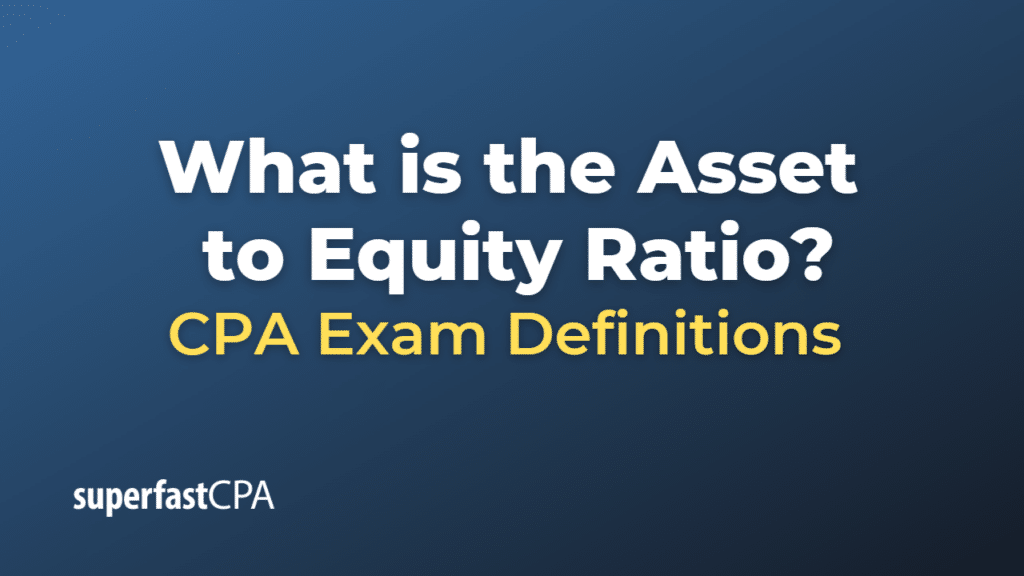Asset to Equity Ratio
The Asset to Equity Ratio, also known as the Equity Multiplier, is a financial metric that measures the proportion of a company’s total assets that are financed by shareholders’ equity. It indicates the financial leverage of a company and helps investors understand how much of the company’s assets are funded by equity rather than debt. A higher ratio indicates a higher level of financial leverage, meaning the company relies more on borrowed funds to finance its assets.
The Asset to Equity Ratio can be calculated using the following formula:
\(\text{Asset to Equity Ratio} = \frac{\text{Total Assets}}{\text{Shareholders’ Equity}} \)
This ratio is useful in analyzing a company’s capital structure and comparing its financial leverage to that of other companies within the same industry.
Example of the Asset to Equity Ratio
Let’s assume we have the financial data for two companies, Company A and Company B.
Company A:
Total Assets: $1,000,000
Shareholders’ Equity: $500,000
Company B:
Total Assets: $800,000
Shareholders’ Equity: $400,000
Now, let’s calculate the Asset to Equity Ratio for both companies:
Company A:
\(\text{Asset to Equity Ratio} = \frac{\text{Total Assets}}{\text{Shareholders’ Equity}} \)
\(\text{Asset to Equity Ratio} = \frac{1,000,000}{500,000} \)
\(\text{Asset to Equity Ratio} = 2 \)
Company B:
\(\text{Asset to Equity Ratio} = \frac{\text{Total Assets}}{\text{Shareholders’ Equity}} \)
\(\text{Asset to Equity Ratio} = \frac{800,000}{400,000} \)
\(\text{Asset to Equity Ratio} = 2 \)
In this example, both Company A and Company B have an Asset to Equity Ratio of 2. This means that for every dollar of shareholders’ equity, each company has financed $2 worth of assets. The ratio indicates that both companies have the same level of financial leverage, even though the total assets and shareholders’ equity amounts differ.













